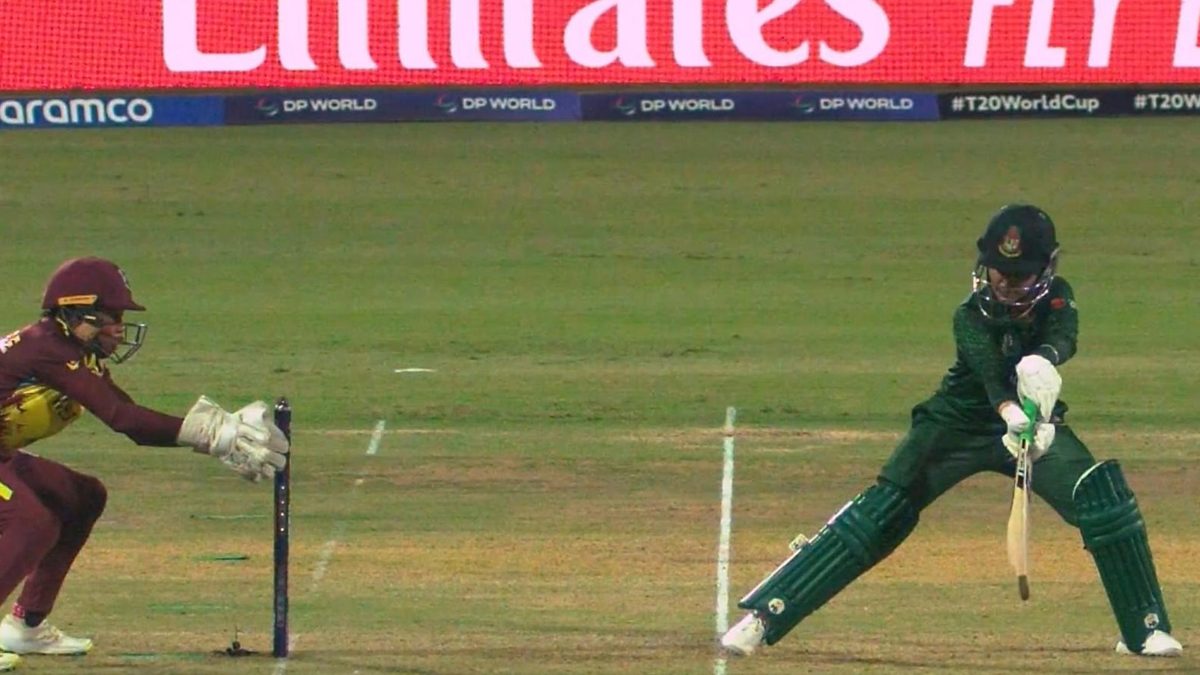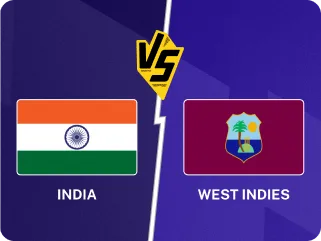
West Indies lost out on a stumping opportunity during their Women's T20 World Cup fixture against Bangladesh, thanks to a rarely-seen no-ball concerning the position of the wicketkeeper.
The two sides faced off in a crucial Group B encounter in Sharjah, with second place in the group still open to the winner of this contest. West Indies captain called the coin toss correctly, and elected to field first.
Her bowlers stepped up to their task, as off-spinner Karishma Ramharack struck twice in the Powerplay – Shathi Rani was stumped thanks to some quick glovework from keeper Shemaine Campbelle before Dilara Akter's stumps were disturbed.
Read more: Scenarios: What do India need against Australia to qualify for the T20 World Cup semi-finals?
But in the 12th over of the innings, with one stumping already to her name, Campbelle was denied another due to a rarely seen no-ball.
Bangladesh captain Nigar Sultana Joty attempted a cut shot off leggie Afy Fletcher, dragging her back foot out of the crease as she did so. The batter missed the ball, and Campbelle collected it before whipping off the bails and appealing for the stumping.
As the decision was referred to the third umpire, replays indicated that Joty was short of her ground as the bails were disturbed. However, they also showed that Campbelle had collected the ball in front of the stumps, meaning the final decision was not only not out, but a no-ball as well.
Also read: Multan madness - all the records England broke against Pakistan
What do the Laws say?
This no-ball is rarely seen especially at the international level, but as outlined by Law 27.3, "The wicket-keeper shall remain wholly behind the wicket at the striker’s end from the moment the ball comes into play until a ball delivered by the bowler touches the bat or person of the striker, or passes the wicket at the striker’s end, or the striker attempts a run.
"In the event of the wicket-keeper contravening this Law, the striker’s end umpire shall call and signal No ball as soon as applicable after the delivery of the ball."
It was a tight call but in the end, the TV umpire did judge Campbelle's gloves to be in front of the stumps before the ball had crossed, meaning there was no other course of action but to call a no-ball. A similar incident unfolded earlier this year when England men's wicketkeeper Jamie Smith was deemed to have moved his gloves in front of the stumpsduring the Old Trafford Test against Sri Lanka in August.
As it happened, Campbelle did later on effect another stumping, as well as hold on to a difficult catch.
Follow Wisden for all cricket updates, including live scores, match stats, quizzes and more. Stay up to date with the latest cricket news, player updates, team standings, match highlights, video analysis and live match odds.








